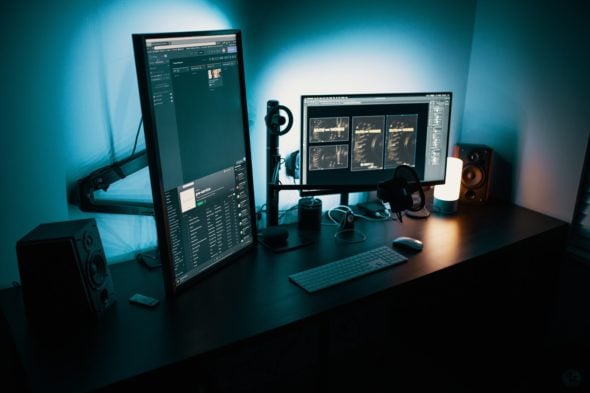
Blue Light: Hidden Behind the Screen
Posted July 8, 2019Smartphones, tablets, TVs, and computers have all drastically changed how we communicate, work, and see the world. We can easily be sitting in an office chair but also see the surf in the outer banks or catch up on last nights game. Seemingly harmless and a great way to stay connected to the world, however, hidden behind the screens there is a harsh light known as blue light.
What is the biggest source of blue light? The sun! So you may be wondering why everyone is talking about the harmful effects if we have been living with blue light exposure since the dawn of time.
Blue light has a very short wavelength, meaning it has a substantial amount of energy and can be classified into two categories; artificial and natural. Natural sources of blue light, such as the sun, are very important in regulating sleep patterns, heightening alertness, and increasing our mood.
The problem with artificial blue light is its failure to adjust to the time of day; throwing off our natural rhythms. Because our world has become incredibly digital, the average working American is spending up to 8 hours a day working on a device (which doesn’t even account for personal use!)
Staring at a screen for numerous hours on end can not only cause dry eyes, but also eye strain. Digital eye strain includes symptoms such as redness, irritation, headaches, increased light sensitivity, and fatigue. If you have ever experienced any of these symptoms, you can relate to the pain of closing your eyes and feeling a stinging feeling or general discomfort even after you stop looking at the screen.
Simply cutting out all devices from our day-to-day routine is not practical; however, there are a few small changes you can implement in your daily life to make sure your vision health does not dwindle away.
Naturally, we tend to blink less when staring at screens which can cause dry eyes and lead to eye strain. One solution to combat this is following the 20/20/20 rule; every 20 minutes look at something 20 feet away for 20 seconds. When doing this remember to blink often, the goal is to keep your eyes lubricated.
When setting up your monitor, it’s important to set it up in a way to reduce eye, neck, and back strain. Screens smaller than 20 inches should be an arm’s length away and slightly tilted up. You will want to adjust the monitor so that glare is not coming from windows or overhead lights. Lastly, you will want to make sure the top of the screen is at eye level. By setting up your monitor in this way, it helps to ensure that it does not cause any additional strain.
You can also purchase computer glasses, which are designed to filter out blue light. These glasses are designed with an anti-glare coating and are tinted to help create a contrast with the computer screen.
Blue light may permeate everywhere in our lives, but if you incorporate these small changes, you can help defend your eyes. Another way to keep your eyes healthy is to schedule your annual eye exam. If you’re due for an appointment, give us a call at our Christiansburg or Salem locations!
